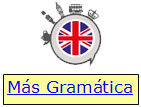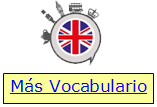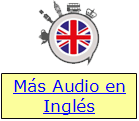|
Alternative medicine
Wikipedia: “Alternative medicine is any practice that is put forward as
(presented as) having the healing effects of medicine,
but does not originate from evidence gathered using the scientific
method. Nor is it part of biomedicine, nor contradicted by scientific
evidence or established science.”
Examples include new and traditional medicine practices such as
homeopathy, naturopathy, chiropractic, energy medicine, various forms of
acupuncture, acupressure, traditional Chinese medicine, cupping,
Ayurvedic medicine, Sekkotsu, Reiki, Bach flowers remedies, aromatherapy,
Alexander technique, crystal healing, Shiatsu, reflexology,
chromotherapy/colour therapy and Christian faith healing.
We don’t have time to speak about ALL the difference types, but we’re
going to look at four kinds of alternative medicine and see if we
believe that they actually work.
We’ll look at HOMEOPATHY, ACUPUNCTURE, AROMATHERAPY and The ALEXANDER
TECHNIQUE
Vocabulary
To treat (treatment), to treat someone
FOR something “I’m being treated for high uric acid.”
Placebo = a fake treatment with no physical/scientific basis for success,
often used in clinical trials
(Do/carry out/conduct) research
Scientific studies
Pseudoscience – a claim, belief, or practice presented as scientific,
but which does not follow scientific method.
A charlatan = someone who pretends (fingir) to know something that s/he
really doesn’t
“Mind over matter” = believing that your thoughts can in themselves
produce physical effects
To cash in (on something) = to make money from a popular trend or fad
eg. “The shopkeeper is cashing in on the popularity of crystal healing
by starting to sell expensive healing crystals in his shop.”
A practitioner = a person who practices (alternative/conventional)
medicine
Conventional medicine = not alternative medicine (eg. radiation
chemotherapy)
New Age = the modern equivalent of the hippie/flower power movement
HOMEOPATHY
What is homeopathy?
“Homeopathy is a natural form of medicine used by over 200 million
people worldwide to treat both acute and chronic conditions. It is based
on the principle of ‘like cures like’. In other words, a substance taken
in small amounts will cure the same symptoms it causes if it were taken
in large amounts.
The holistic nature of homeopathy means each person is treated as a
unique individual and their body, mind, spirit and emotions are all
considered in the management and prevention of disease. Taking all these
factors into account a homeopath will select the most appropriate
medicine based on the individual’s specific symptoms and personal level
of health to stimulate their own healing ability.
Homeopathic medicines are safe to use as they rarely cause side-effects.
This means when used appropriately under the guidance of a qualified
homeopath they can be taken by people of all ages, including babies,
children and pregnant or breastfeeding women.” (source: The British
Homeopathic Association)
Homeopathy isn’t just taking herbal medicine. Caffeine is prescribed by
homeopaths (under the name ‘coffea’) as a treatment for insomnia.
Wikipedia: Homeopathic preparations are not effective for treating any
condition; large-scale studies have found homeopathy to be no more
effective than a placebo, suggesting that any positive feelings that
follow treatment are only due to the placebo effect and normal recovery
from illness.
https://www.quackwatch.com/ – “Your Guide to Quackery, Health Fraud, and
Intelligent Decisions”
ACUPUNCTURE
What is Acupuncture?
Acupuncture is a form of alternative medicine and a key component of
traditional Chinese medicine (TCM) involving thin needles being inserted
into the body. TCM theory and practice are not based upon scientific
knowledge, and acupuncture is commonly described as pseudoscience. There
is a diverse range of acupuncture theories, involving different
philosophies. Techniques vary depending on the country. It is most often
used for pain relief, though it is also used for a wide range of other
conditions. It is generally only used in combination with other forms of
treatment.
The conclusions of many trials and numerous systematic reviews of
acupuncture are largely inconsistent.
An overview of medical reviews found that acupuncture is not effective
for a wide range of conditions. It may be effective for only
chemotherapy-induced nausea/vomiting, postoperative nausea/vomiting, and
idiopathic headache. It may alleviate certain kinds of pain. Evidence
suggests that short-term treatment with acupuncture does not produce
long-term benefits. Some research results suggest acupuncture can
alleviate pain, though the majority of research suggests that
acupuncture’s effects are mainly due to placebo.
Craig has tried acupuncture to alleviate a uric acid attack.
Reza has had success with acupuncture to increase his energy levels.
AROMATHERAPY
What is Aromatherapy?
Aromatherapy is the practice of using the natural oils extracted from
flowers, bark (corteza), stems (tallos), leaves (hojas), roots (raizes)
or other parts of a plant to enhance psychological and physical well-being.
The inhaled aroma from these “essential” oils is widely believed to
stimulate brain function. Essential oils can also be absorbed through
the skin, where they travel through the bloodstream and can promote
whole-body healing. (source: www.aromatherapy.com/ )
There is no good medical evidence that aromatherapy can either prevent
or cure any disease, but it might help improve general well-being. (source:
Wikipedia)
THE ALEXANDER TECHNIQUE
The Alexander Technique (developed in
the 1890’s), named after Frederick Matthias Alexander, is an educational
process that develops the ability to realign posture and to avoid
unnecessary muscular and mental tension.
Alexander believed the individual’s self-awareness (conciencia de sí
mismo) could be inaccurate, resulting in unnecessary muscular tension
such as when standing or sitting with body weight unevenly distributed,
holding one’s head incorrectly, walking or running inefficiently, and
responding to stressful stimuli in an exaggerated way.
Alexander said that those who habitually “misused” their muscles could
not trust their feelings (sensory appreciation) when carrying out
activities or responding to situations emotionally.
The effectiveness of the Alexander Technique is uncertain because of
insufficient evidence. There is evidence suggesting the Alexander
Technique is helpful for long-term back pain, long-term neck pain, and
may help people cope with Parkinson’s disease, but little evidence that
it helps any other medical conditions.
From https://www.alexandertechnique.com/
“The Alexander technique is a way of learning how you can get rid of
harmful tension in your body.”
The Alexander Technique is a way to feel better, and move in a more
relaxed and comfortable way… the way nature intended.
An Alexander Technique teacher helps you to identify and lose the
harmful habits you have built up over a lifetime of stress and learn to
move more freely.
The Alexander Technique is for you if you are ready to feel more
comfortable in your own body.
The Alexander Technique can also help you if:
You suffer from repetitive strain injury or carpal tunnel syndrome (trapped
nerve). (strain = esfuerzo, estrés, esguince, presión, tensión)
You have a backache or stiff neck and shoulders (tortícolis) .
You become uncomfortable when sitting at your computer for long periods
of time.
You are a singer, musician, actor, dancer or athlete and feel you are
not performing at your full potential.
 *Dispones
de más
PODCAST en inglés publicados en los cuadernos anteriores *Dispones
de más
PODCAST en inglés publicados en los cuadernos anteriores
a los que puedes acceder directamente así como al índice de su
contenido. |
|
|



 *Dispones
de más
*Dispones
de más


